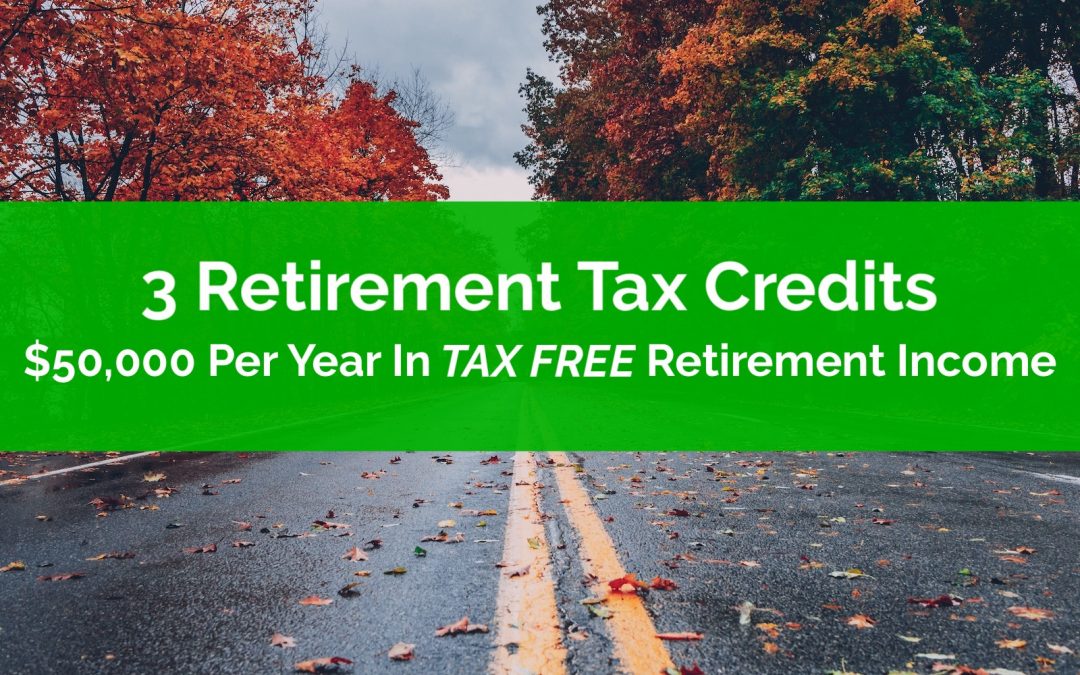
by Owen | Mar 13, 2023 | Financial Goals, Financial Planning, Government Programs, Income, Investment Planning, Retirement Planning, Tax Planning
When we talk about retirement planning with our clients one topic that inevitably comes up is tax planning.
Income tax is often the single largest expense in retirement. Larger than travel, food, or medical expenses.
Income tax often comes up when we talk about retirement planning because many people are worried about paying too much tax in retirement and negatively impacting their retirement spending goals.
Many people do not realize that in retirement there are new tax credits that can help reduce income tax, sometimes to zero. It’s understandable that people aren’t aware of these tax credits because they’re mostly available to those over age 65, so they’re not necessarily on someone’s radar if they’re under age 65.
Paying less tax in retirement is nice, but what if you could pay NO TAX at all in retirement? With some pre-retirement planning that is easily possible.
There are three important tax credits that can help you earn over $25,000 per year as an individual, or over $50,000 per year as a couple, and pay zero tax in retirement.
In this blog post we’re going to look at three important tax credits in retirement, two of which, for most people, are only available after age 65. We’re also going to work backward to craft a retirement plan that provides $75,000 per year in spending with zero tax.
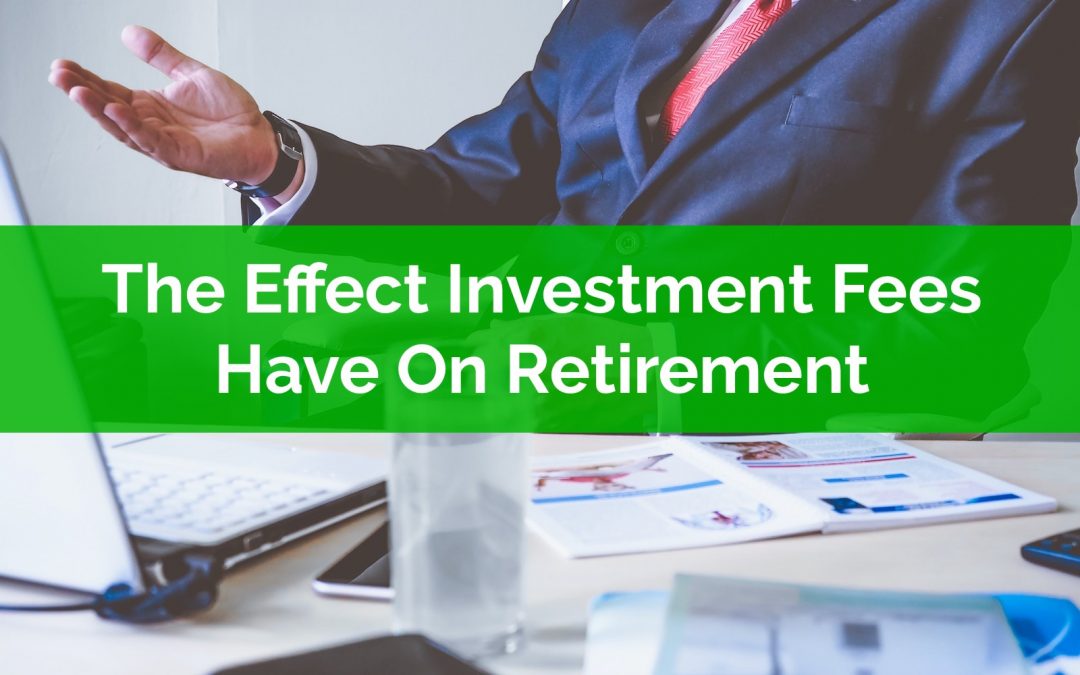
by Owen | Feb 27, 2023 | Investment Planning, Retirement Planning, Saving Money
Everyone is talking about investment fees these days. There are ads on the radio, television, and online… there are podcasts, websites, blogs dedicated to low-fee investing… there are also books, magazines and research studies… all focused on one thing… how much the average investor pays in fees while saving for retirement.
But very few people are talking about the effect investment fees have on retirement itself. Mostly they talk about how fees impact you as you save for retirement, but very few mentions what happens if you continue to pay high fees as you enter retirement.
Fees definitely have an enormous impact on how much you can save for retirement. The average mutual fund fee is 2.35% in Canada, and that’s the average, there are lots of situations where the fee is even higher. The effect of this fee on a lifetime of savings and investments is enormous!
But what if you’re close to retirement? What is the impact then? Arguably the effect of investment fees on retirement planning is even greater than any other period.
Why?
Fees have an enormous effect on retirement planning because by the time we’ve reached retirement we’ve already saved up a huge nest egg. Unlike the accumulation phase, where you have limited assets in the beginning, when it comes to retirement, you’re starting with a huge amount of investment assets. This makes the impact of fees enormous, especially in early retirement.
The problem for retirees is that investment fees are hard to spot, hard to find, they’re almost hidden by investment providers, whether that is intentional or not. I’ve seen this on countless investment statements I receive from clients. Based on the statement alone you would NEVER know how much they’re paying in investment fees each year.
This isn’t an isolated issue, it’s a problem that many, many retirees face. Low-fee investing is a relatively new option in Canada. If you were investing 10-20+ years ago there just weren’t as many options to reduce your investment fees.
Many retirees who have high-priced investments are shocked (and somewhat saddened) to learn exactly how much they’re paying each year. It’s not their fault, this information is hard to find and not readily available to investors.
To figure out how much an investor is paying each year usually requires some digging. Mutual fund codes vary by fund and fund class. Sometimes fees can vary by 1% or more for the same mutual fund depending on the class.
But once you know how much you’re truly paying you can start to see the impact it will have on your retirement plans. There are two main effects that high fees can have on retirement, and the impact can be substantial.
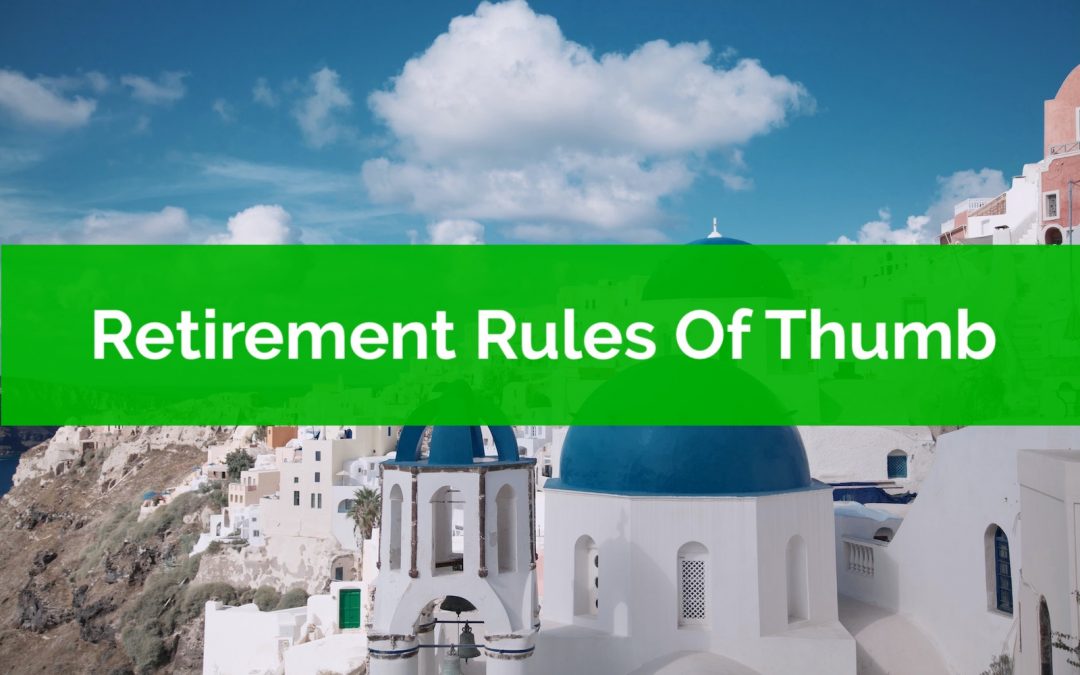
by Owen | Feb 21, 2023 | Financial Planning, Investment Planning, Retirement Planning
Rules of thumb can be great tools when quickly evaluating financial goals and objectives. But not all rules of thumb are good, especially when it comes to retirement.
Some retirement rules of thumb are excellent, while others are misleading. Rules of thumb are great when creating rough financial goals, but they can be too general, and in the worst-case scenario they can be misleading and out of date.
In this blog post we’re going to review three retirement rules of thumb and we’re going to give them a “thumb” rating from 1 to 5. One being complete garbage, never use. And five being just amazing, you can plan your life by this rule.
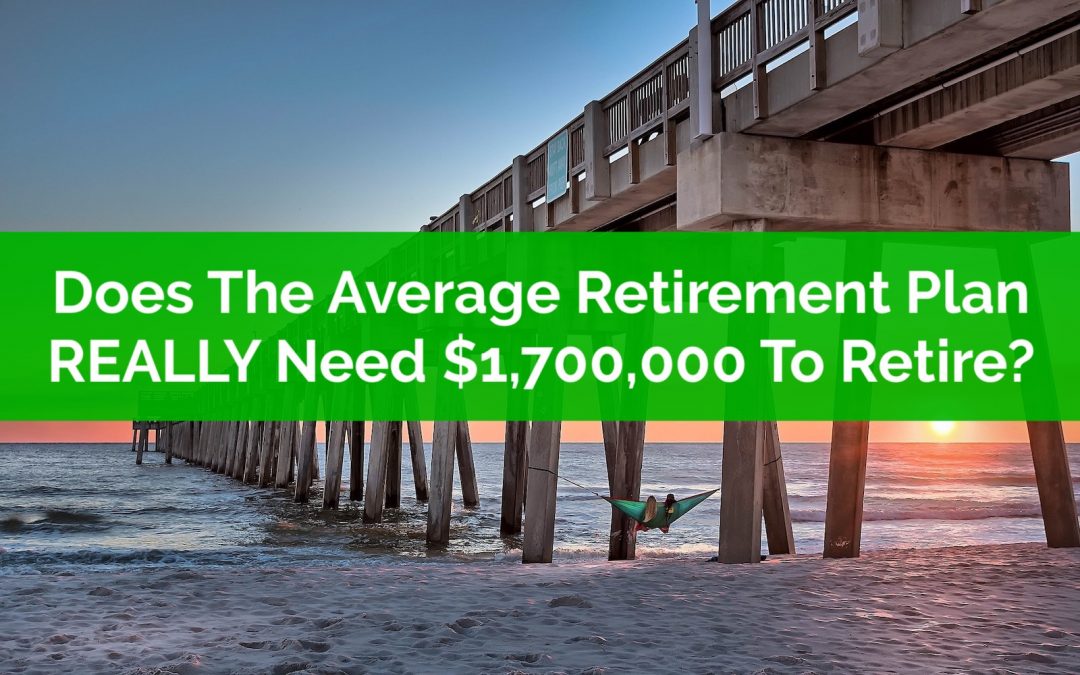
by Owen | Feb 13, 2023 | Budgeting, Financial Goals, Financial Planning, Income, Investment Planning, Retirement Planning, Saving Money, Tax Planning
In this blog post we’re going to look at an average retirement plan with $1,700,000 in financial assets. Why $1,700,000? Because that’s what a recent bank survey suggested that the average Canadian feels they need to retire.
Now, banks are in the business of selling financial products, so they may be somewhat biased when it comes to how much you should be saving for retirement. They’re probably happy for you save and invest more for retirement because it means more investment fees for them. But let’s give them the benefit of the doubt and let’s see if $1,700,000 is really the right retirement goal for the average Canadian household.
Having done many, many, advice-only retirement plans I suspect that this number is grossly overstated, and a much smaller amount is likely sufficient to have a comfortable retirement for the average household.
To test if this is true, we’re going to build an “average retirement plan” with $1,700,000 in financial assets.
Of course, no retirement plan is ever average. Some people have more CPP, some less. Some people have defined benefit pensions, others do not. Some people want to spend more in retirement while others are content with spending less. There is no such thing as an “average retirement plan” but we’re going to make some broad assumptions to test whether or not $1,700,000 is a reasonable goal for retirement assets or if it’s grossly overstated.
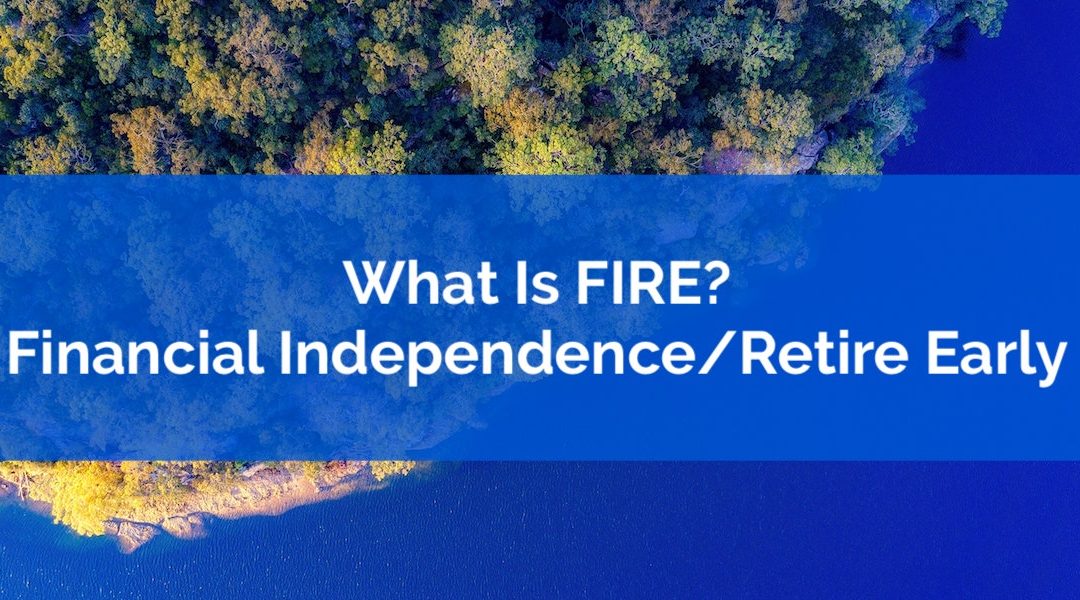
by Owen | Jan 30, 2023 | Behavioral Finance, Budgeting, Financial Goals, Financial Planning, Income, Investment Planning, Retirement Planning, Saving Money
You may have noticed a new term starting to creep into the mainstream financial media, that term is FIRE, and you might be wondering, “What the heck is FIRE? And how is it related to personal finances?”.
FIRE is an acronym that stands for Financial Independence/Retire Early. The basic idea is that if you pursue FIRE you can eventually stop working for money. You can be financially independent. You can do anything, retire early, keep working, volunteer, basically you can have more freedom.
The idea is that with enough savings/investments you’ll eventually reach the point where you can live off your investment income indefinitely. Once you reach this point you’re considered financially independent, you no longer NEED to work for an income, and can retire to a life of leisure (although you may choose to continue to work, change roles/professions, start a business, or volunteer).
While the concept of early retirement sounds amazing, it does take quite a bit of focus and determination to get there. To reach FIRE it requires a high savings rate, very high.
The typical financial advice given to the public is to save and investment approximately 20% of your net income (part of the simple 50/30/20 budget).
But to reach financial independence retire early you need to save more, much more. To reach FIRE you need to have a savings rate somewhere in the 30%-70%+ range. The higher your savings rate the faster you can stop working for money.
Because it’s easier to reach financial independence/retire early with a high savings rate, the path to FIRE is made easier with an above average income. With an above average income, basic expenses are easily covered, and it becomes more about managing lifestyle inflation. People who pursue FIRE try to limit their lifestyle inflation to maintain a high savings rate.
FIRE is also possible with a below average income, but requires a lot of creativity to reduce basic expenses. This may include house hacking, avoiding car ownership, and more extreme lifestyles. To reach financial independence/retire early with a low-income you need to live an alternative lifestyle.
Reaching FIRE is one of those extreme personal finance goals, it’s a goal that isn’t for everyone.
Even though the end goal sounds appealing, it requires a lot of hard work and dedication along the way. Reaching financial independence retire early means living way below your means for the rest of your life. It’s a lifestyle more than it is an end goal. It’s a lifestyle with a lot of freedom, but it’s also a lifestyle that requires a lot of control.
If you’re able to control your spending, and save a large % of your income, then reaching financial independence might only be a few years away.
To find out how far away you are from financial independence you can make a copy of our FIRE calculator and quickly calculate how many years it will take to reach FIRE in your situation. It will help you estimate how many years from FIRE you are based on your net-income, current expenses, and existing savings.
We’ve used our FIRE calculator to create four examples of how to reach FIRE.

by Owen | Jan 2, 2023 | Financial Planning, Income, Investment Planning, Retirement Planning, Tax Planning
There is never a bad time to start saving for retirement, but when is the BEST time to start planning? We’ve been told to start saving & investing for retirement from a very young age, the earlier the better, but when do you actually start planning for retirement itself? When do you start to think about income, expenses, taxes and government benefits during your retirement years?
Retirement can be very complex. When you reach retirement it’s pretty easy to have 6-10 different income sources, all with different tax treatments and claw back rules. One income source can be tax free while the other is fully taxed. Some retirement income is counted when calculating government benefit claw backs while others aren’t. These rules can make it difficult to estimate how much you can expect in retirement.
Retirees usually have their own source of retirement income from TFSAs, RRSPs, LIRAs, RRIFs, and non-registered accounts. Plus, they have government retirement programs like CPP, OAS and GIS. Then there are government benefits like the GST/HST credit and other senior’s benefits. And on top of that there are defined benefit pensions and annuities too.
With all these different income sources, it can get a little confusing. It can be difficult to know exactly how much can you expect in retirement income, how much will be lost to taxes, and how that matches up with retirement expenses.
As you get closer to retirement it can be extremely helpful to have a retirement plan in place. A plan that integrates all these different sources of income, calculates taxes and government benefits, and ensures you can reach your retirement spending goals. But can you reach a point where it’s too late to plan for retirement?
When is the best time to plan for retirement?






